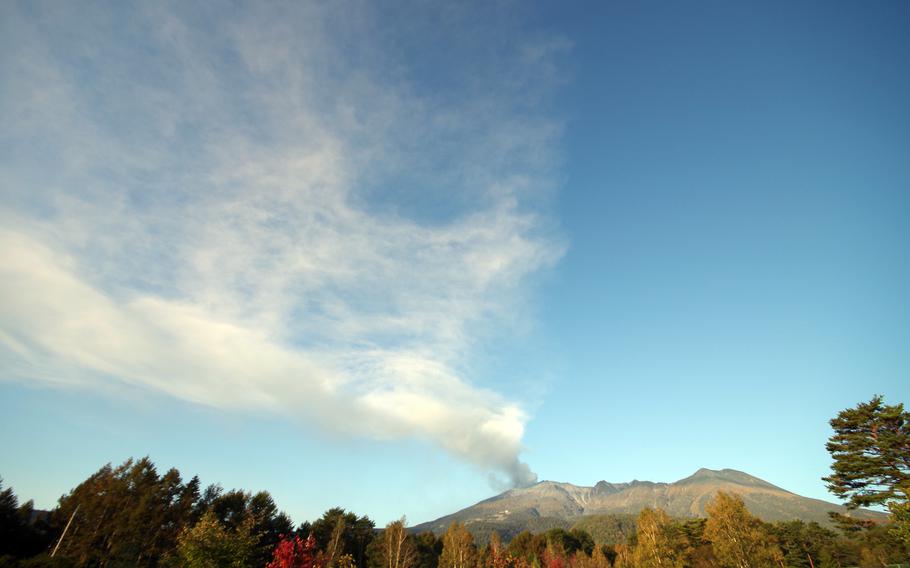
Volcanic smoke rises from Mount Ontake, about 60 miles northeast of Nagoya, Japan, Sept. 28, 2014, a day after it erupted. (Wikimedia Commons)
A ban on summiting Mount Ontake, a volcano that straddles Nagano and Gifu prefectures in central Japan, ends this weekend.
From 10 a.m. Saturday, people will be allowed to access a ridge linking the 9,633-foot Otaki peak to the highest part of the volcano, 10,627-foot Kengamine peak, according to local officials quoted by the Kyodo news agency Wednesday.
The area was hit hard by an eruption on Sept. 27, 2014, that killed 58 people and left five others missing. Winds prevented a predicted ash cloud from reaching Yokota Air Base, the U.S. airlift hub in western Tokyo.
Otaki village, near Mount Ontake, has built a pair of evacuation shelters in the reopened area, with final safety checks conducted July 18. Some hiking paths near the summit are still off-limits, Kyodo reported.
The 2014 eruption occurred suddenly, and Ontake is likely to erupt again someday, although predicting when is difficult. The volcano experienced four phreatic eruptions between 1979 and 2014, according to a November 2016 article in the journal Earth, Planets and Space.
A phreatic eruption occurs when water beneath the ground or on the surface is heated by magma, hot rocks or new volcanic deposits, according to the U.S. Geological Survey. In Ontake’s case, the water was likely superheated by magma deep below the surface.
“The intense heat of such material (as high as 2,140° F for basaltic lava) may cause water to boil and flash to steam, thereby generating an explosion of steam, water, ash, large rocks known as blocks and chunks of lava called bombs,” according to USGS.
Photographs from the 2014 eruption show ash and steam billowing from at least six sites. They also depict dramatic scenes, including long lines of hikers making their way down the ash-fogged mountain, Japan Self-Defense Forces helicopters airlifting survivors from Ontake’s flanks and rescue workers in orange and yellow combing through a mountain lodge coated in gray volcanic ash.
Three eruptions preceded the 2014 event, starting on Oct. 28, 1979, the first recorded eruption on Ontake, which discharged about 200,000 tons of material, according to the November 2016 article.
Small eruptions occurred in 1991 and 2007 from the vent that opened with the 1979 eruption, along with a “very long period earthquake,” and some deformation of the mountain surface, according to the article.